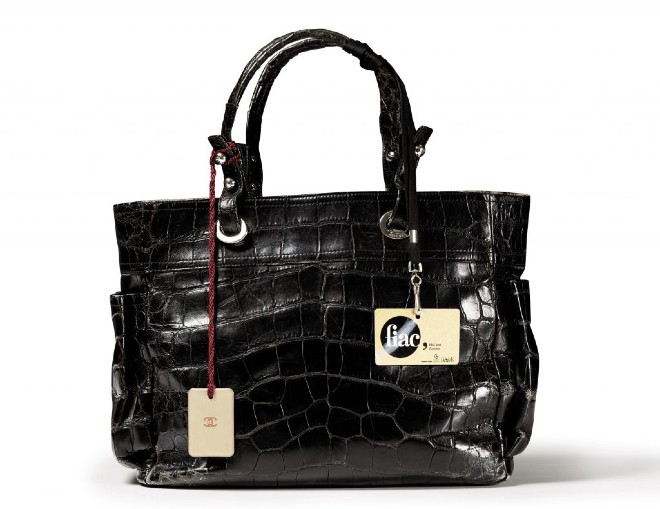Sotheby’s In Paris Sold The Late Karl Lagerfeld’s Possessions For €6.2 million - 2 minutes read

Image: Chanel
Sotheby’s in Paris sold the late Karl Lagerfeld‘s possessions for €6.2 million. In addition, two world records were set for a Chanel handbag and a Martin Szekely artwork. Digital bidding was open from December 6 to Thursday (December 9), and live auctions were held in Paris on Tuesday and Wednesday (December 14 and 15). This is the second in a three-part sale that will take place in the late designer’s three homes: Monaco, Paris, and Cologne. Lagerfeld’s possessions for sale include art, furniture, sketches, and clothing.
The record-breaking handbag was a black Chanel crocodile tote bag from 2010 that the designer had carried on a daily basis, which sold for €94,500, and the Szekely artwork, “Miroir Soleil Noir,” which sold for €375,500.

Image: Sotheby’s
The highest bid for a piece of Lagerfeld’s own artwork was €163,800 for a portrait of de Bascher titled “Return From the Valley of Emeralds,” versus an estimate of €400 to €600. A watercolour painting of de Bascher and Anna Wintour at the Louvre from 1985 fetched €50,400. A Dior black wool jacket from 2008 sold for €35,280, and a sequined Saint Laurent jacket from 2015 went for €5,292. The Lagerfeld estate auctions drew nearly 1,500 bidders from more than 60 countries. The sale of nearly 1,000 lots netted €18.2 million, more than four times the high estimate of €4.6 million.

Image: Sotheby’s
“Act two of the Karl sale has delivered on its promises, following the historic success of the inaugural Monaco sale,” said Pierre Mothes, vice president of Sotheby‘s France, in a statement issued Thursday night. “Collectors from all over the world have consecrated Karl Lagerfeld’s status as a fashion icon by snapping up his objects and designs.” This enormous public success would undoubtedly have moved the ‘Kaiser.'”

Image: Sotheby’s
Lagerfeld, who died in 2019, revolutionized the brands for which he worked, including Fendi and Chanel, as well as running his own label, Karl. Most lots outperformed their estimates due to advance bids placed online, and collectors in the room, on the phone, and online competed to outbid each other for pieces that exemplified the designer’s instantly recognizable aesthetic.